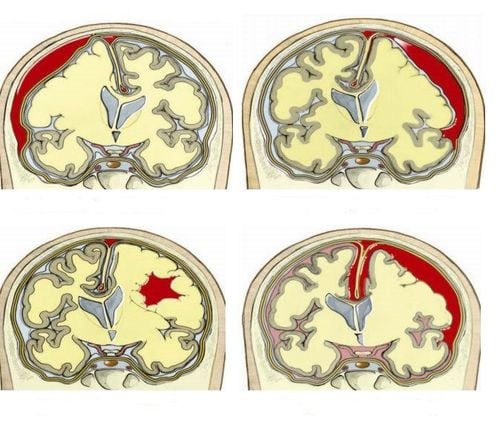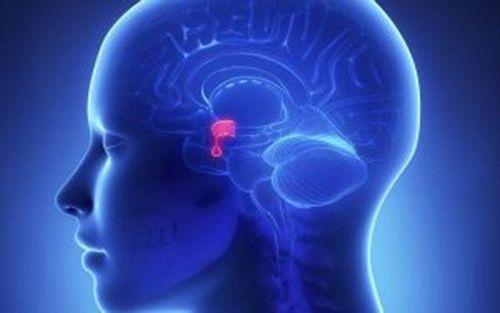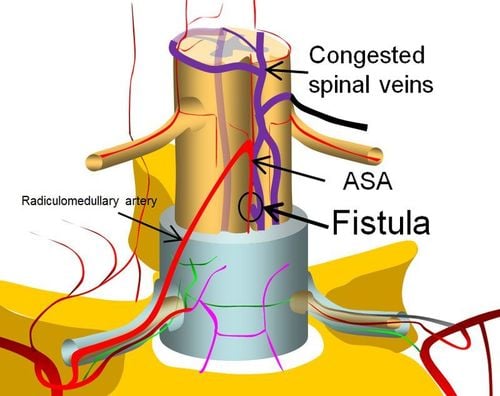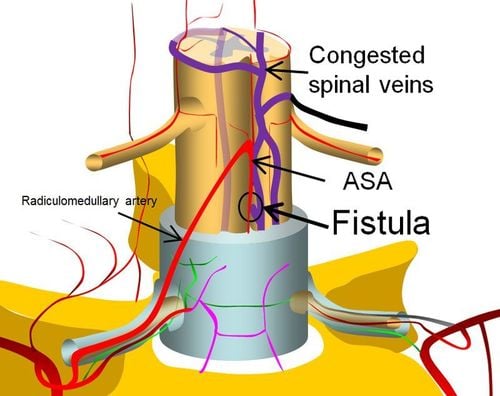This is an automatically translated article.
Intraventricular bleeding is often primary or secondary; in some cases, intraventricular bleeding may not have an identifiable cause, but half of people with ICH have chronic hypertension of unknown origin. obvious, because it is too small to be seen on a CT or MRI scan.1. What is intraventricular hemorrhage? The cause to the illness
The ventricular system consists of a network of chambers that circulate with each other (this network is filled with cerebrospinal fluid, located in the brain parenchyma) and the ventricles (the ventricles include the two lateral ventricles, the third and fourth ventricles, and the aqueduct. Sylvius and two Monro holes).Cases of intraventricular bleeding usually occur secondary to cerebral parenchymal bleeding, intraventricular hemorrhage ruptures into the ventricular cavity, or when the subarachnoid hemorrhage extends into the ventricles. In cases of intracerebral hemorrhage, intraventricular hemorrhage accounts for about 40% and 10% of cases of subarachnoid hemorrhage. In addition, some of the following causes cause intraventricular bleeding:
Intraventricular hemorrhage due to closed traumatic brain injury: This is a picture of traumatic brain damage, including contusion and subarachnoid hemorrhage due to trauma. love. Intraventricular bleeding due to vascular malformations: Intraventricular bleeding due to vascular malformations is usually an arteriovenous fistula. Intraventricular bleeding due to tumors in the ventricles: Tumors such as papillomas, neuroblastomas, meningiomas, metastases, astrocytomas, and meningiomas can cause intraventricular bleeding. Intraventricular hemorrhage due to an intraventricular aneurysm that develops distal to the choroidal arteries. Occasionally, intraventricular hemorrhage due to rupture of an anterior communicating aneurysm, aneurysm of the basilar artery into the ventricles, or an aneurysm of the posterior inferior cerebellar artery may not have specific symptoms of subarachnoid hemorrhage. Intraventricular hemorrhage can also be caused by Moyamoya disease, coagulopathy, acquired or congenital, pituitary bleeding, muscular dysplasia, or sympathomimetic abuse. Besides, in about 20% - 50% of cases, no cause of intraventricular hemorrhage is identified accurately. About half of people with an intraventricular bleed have chronic hypertension that is not obvious, because it is too small to be seen on CT or MRI.
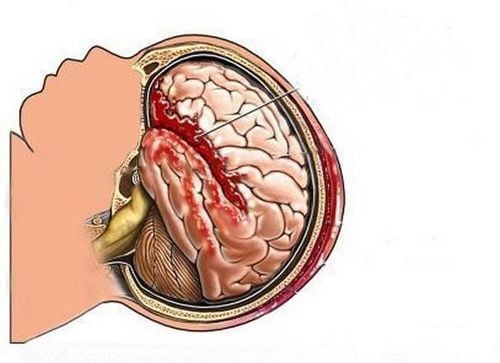
Chảy máu não thất thường do nguyên phát hoặc thứ phát, trong một số trường hợp, chảy máu não thất có thể không xác định chính xác nguyên nhân
2. Symptoms of intraventricular bleeding
Clinical symptoms of intraventricular hemorrhage usually manifest as follows:In the case of primary intraventricular bleeding, the typical presentation is sudden headache. In addition to sudden headache, the patient is accompanied by nausea, vomiting, and impaired consciousness such as confusion, disorientation. A small number of patients with intraventricular hemorrhage lose consciousness at the onset of the disease. Symptoms often have a sudden onset; however, some patients have progressive or fluctuating symptoms. Focal neurological manifestations are uncommon in patients with primary intraventricular hemorrhage but may be related to cranial nervous system abnormalities. Cranial nerve palsy due to stretching across the base of the skull, dysfunction of the VI and III nerves. Convulsions may occur but are uncommon. Some patients have high blood pressure or high body temperature, arrhythmia. Patients with intraventricular haemorrhage present with stiff neck, but the presentation will often be inconsistent. The clinical signs and symptoms of hemorrhagic disease will reflect an abrupt increase in intracranial pressure as a consequence of the sudden onset of intracranial blood volume. In addition to some effects of pressure, blood products in the cerebrospinal fluid space can affect brain functions.

Đau đầu đột ngột là biểu hiện điển hình của chảy máu não nguyên phát
3. Complications of intraventricular bleeding
Patients with intraventricular hemorrhage are often at risk of sudden neurological deterioration, which can be caused by acute obstructive ventricular dilatation or recurrent bleeding or other complications. Specifically as follows:Complications of acute obstructive ventricular dilatation: This complication can appear when the circulation of cerebrospinal fluid is blocked by a blood clot. Patients with blood in the third or fourth ventricle are most at risk for this complication. This complication can cause death quickly, requiring emergency intervention. Circulatory ventriculomegaly: Some patients may appear ventricular dilated circulation, this is considered a late complication of intraventricular bleeding. but this complication usually manifests later. Recurrent bleeding occurs: This complication occurs in 10% - 20% of patients with intraventricular bleeding. The high risk of this complication is the case that the cause is cerebral vascular malformation or brain aneurysm, with a history of coagulopathy. Complications of vasospasm causing cerebral ischemia: The case of vasospasm causing cerebral ischemia is not common if the cause of intraventricular bleeding is primary, however, vasospasm causes ischemic stroke. Intracerebral hemorrhage has also been described in exceptional cases and vasospasm is a common complication of subarachnoid hemorrhage if the cause is ruptured cerebral aneurysm. Medical Complications: Some common medical complications in ventricular hemorrhage are mainly neurological impairment. These complications include pneumonia or pulmonary embolism; infections, electrolyte disturbances, cardiovascular instability, deep vein thrombosis and complications causing gastrointestinal bleeding.
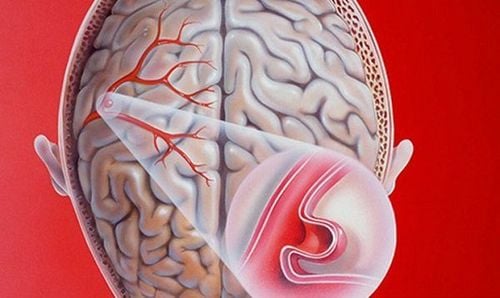
Biến chứng thường thấy trong chảy máu dưới nhện nếu nguyên nhân do vỡ phình động mạch não
Please dial HOTLINE for more information or register for an appointment HERE. Download MyVinmec app to make appointments faster and to manage your bookings easily.




